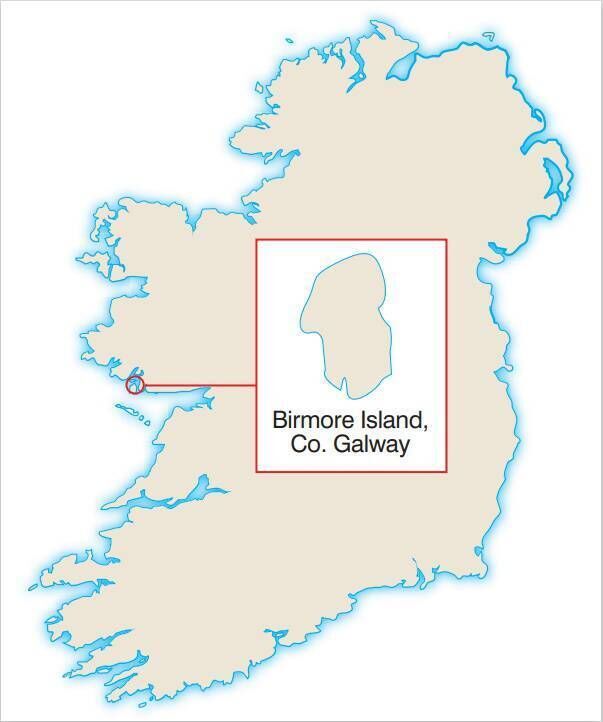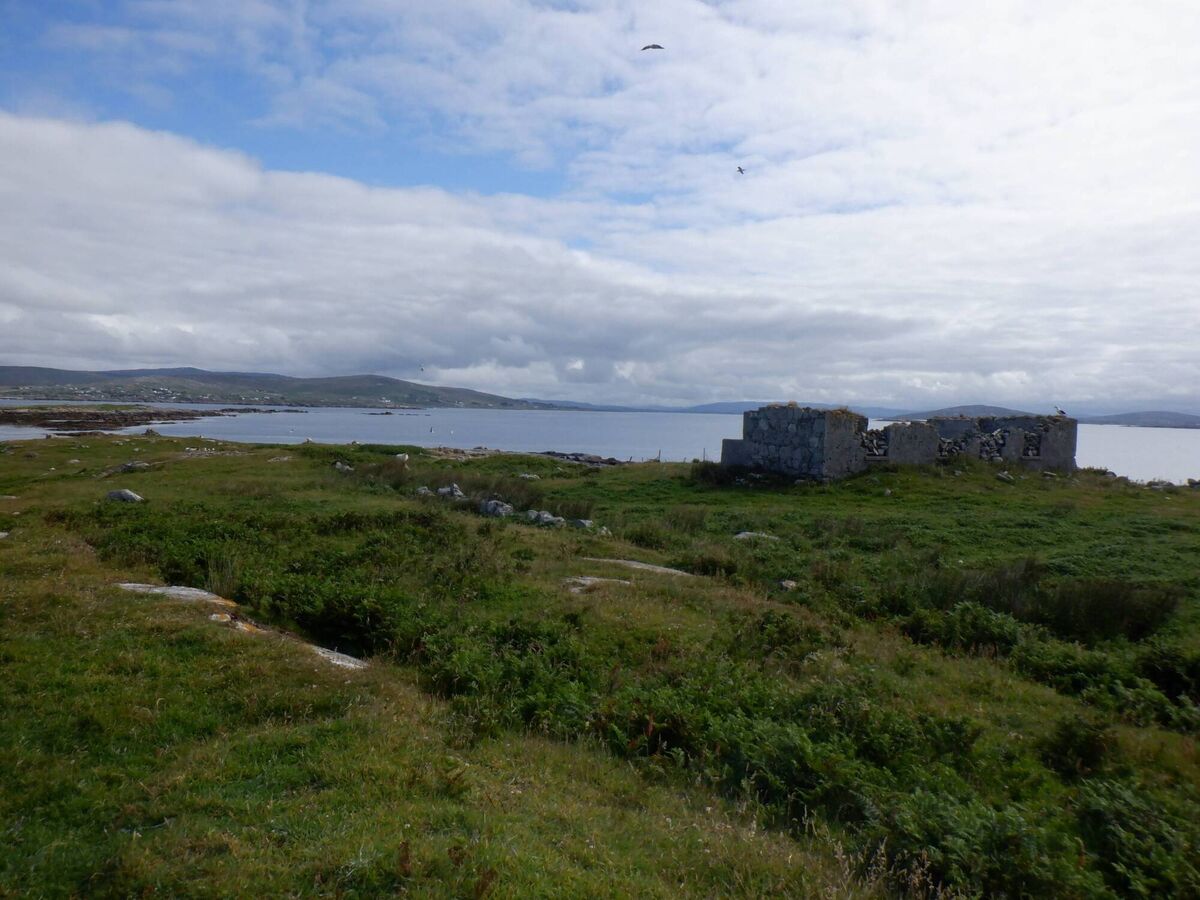Islands of Ireland: 32 unoccupied acres off Galway's coast — besides sheep and gulls

Ruin on Birmore Island, Kilkieran Bay, Connemara. County Galway. Picture: Dan MacCarthy
The eastern sea approach to Birmore Island in Connemara is blocked by a giant reef of imposing seaweed-covered rocks with much foaming water around. It is as if the island forbids visitors with this formidable defence.
Still, an attempt at landing must be made. After a channel opens up at the back of the reef, a calm lagoon gives way to more seaweed and an awkward clamber over the rocks. As a plentiful sward appears, a throng of sheep hold court.
And then the cacophony of gulls screaming and diving in every direction to protect their nests. Plenty of life around!
This south County Galway island at the entrance to Kilkieran Harbour represents another glaring omission on Google Maps. as we saw recently with Inishtubbrid in County Mayo. Its default maps fail to reveal what its satellite imagery shows.

There are other more interesting islands in the area to write about though. There is Illaunmaan named for the sea god Manannán ma Lir; Feenish Island with its vanished population; or Mweenish Island with its Well of the Seven Daughters.
However, Birmore must have something to say for itself. After all, it is 32 acres in size and looks very appealing.
Connemara polymath, Tim Robinson, alighted on this island while writing a column for the Connacht Tribune in the 1980s. Beside the ruins of one of the two houses he discovered some sprigs of wild leek growing. The plant was used in folk medicine and is a telling discovery of the medical dependency of islanders in finding their own cures for ailments.
The difficulties of living on an island and trying to rear a family are manifold. The lack of a doctor for one or a school for another. In the case of Feenish, at least there was a sizeable community of people to help each other out in times of need.
On Birmore in the early years of the last century there were just two families, with four adults. Life would have been very hard indeed. Added to that was the lack of a decent pier which made landing next to impossible in bad weather.
In the 1901 census there were just two families comprising 17 people recorded as living on Birmore Island. In the first house with two rooms, lived the Joyce family. They were Laurence (60) and his wife Barbara (30). They had six children living with them: Dudley (15), Martin (14), Patrick (13), Joseph (10), Michael (5) and Bridget (8). They were all Irish speakers but all were illiterate. All were Catholic. The father was described as a shepherd and the mother a housekeeper. The three older boys were listed as fishermen.

The other house, again a two-room dwelling, was occupied by a family called Cloherty with Bartholmew (40) and his wife Mary (40). They had seven children: Bartholmew [sic] (19), Patrick (15), Mary (14), Bridget (12), Michael (5), John (4) and Sarah (1). Again, all were Irish speakers but illiterate. In this house, the two older boys could speak English, indicating a changing of linguistic habits. The father was described as a shepherd and the mother, a housekeeper. The older two sons were fishermen.
By the 1911 census, just the Cloherty family remained but they were recorded as Clougherty. There is a discrepancy in the ages but close enough as to suggest initial errors had been made. The children’s names are the same but the eldest three had left the island. They were 'replaced' by a new sibling, Martin (8). A small change in their circumstances was that Bridget and Michael could now speak English, indicating that they had access to school, probably on Feenish Island.
The island has had several versions over the centuries including the Welsh-sounding Byrh, the Offaly-sounding Birr, and its near-current offering Bior More. It has a lovely satellite in Birbeg which is a flat, grass-covered island with a quite beautiful strand. With a fair degree of confidence, it is fair to say that no one ever lived there.
No ferry. Kayak from a beach south of the townland of Ardmore which is 3km east of Carna.








